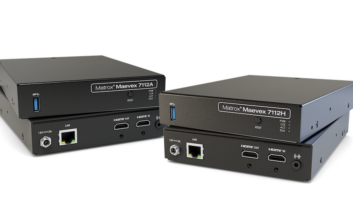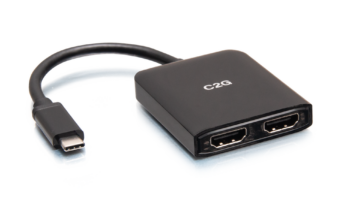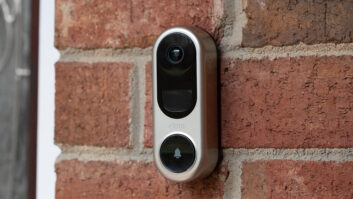Advanced Television Enhancement Forum (ATVEF): This is an alliance of companies from the broadcast, cable, consumer electronics, PC and television transport industries. The group is helping to develop standard protocols for data broadcasts that will enhance television programs with text, graphics and interactive capabilities. The goal is to deliver an open standard for interactive television that is adopted by all affected industries.
Component Video: This is a term given to a variety of video interfaces used to relay component video signals between video devices and television displays. Traditionally, a component video signal is one in which the luminance and chrominance remain as separate components and retain maximum luminance and chrominance bandwidth. Broadband high-definition component video used for progressive-scan and HDTV sources typically is identified as Y-Pb-Pr. This is not the same as component video used for conventional DVD players.
Direct Broadcast Satellite (DBS): A system for transmitting television programming to homes from high-power satellites parked in specially designated geostationary orbital positions. DBS signals are broadcast in the 11.7-12.7 GHz spectrum, and can be received on 18″ dishes typically used by the DirecTv and EchoStar DBS platforms. Plans include using slightly larger 24″ dishes to receive program from two or more orbital slots. The DBS platforms typically use digital MPEG-2 encoding and code orthogonal frequency division multiplexing (COFDM) transmissions to deliver digital bitstreams carrying large lineups of channels to the home-based integrated receiver descramblers (IRDs).
Digital Video Broadcasting (DVB): This is a broadcasting standard developed by a group with more than 200 members from 25 countries to transmit digital video over a variety of pathways. It is the preferred system in most European countries, and encompasses a format for satellite transmission (called DVB-S) that can be used with any transponder and is currently the foundation of EchoStar Dish Network satellite system in the U.S. Also included is a matching cable standard called DVB-C and a digital terrestrial system called DVB-T.
Downconverting: The process of changing pixel count, frame rate or scanning format to display an image on a TV screen by removing pixels. This is used to display a high-definition picture on a standard-definition screen.
IEEE 1394 (FireWire or i.LINK): This is a digital interface originated by Apple Computer and developed into a standard by the IEEE 1394 working group. The interface can transport digital data at 100, 200, or 400 Mbps without the need for digital-to-analog conversion. When used as a digital connection for digital televisions the connection runs at a 200 Mbps rate.
Interlaced: This is short for the interlaced scanning process, during which a frame of video is divided in halves of odd- and even-numbered lines and is transmitted and scanned consecutively as separate interleaved fields. The process is used to fit more picture information in a broadcast frequency.
Program and System Information Protocol (PSIP): This is a part of the ATSC digital television specification that enables a DTV receiver to identify program information from the station. Digitally broadcast data is received and displayed in electronic program guides that viewers will use to identify all the channels and programming that a particular broadcaster is offering in that market at that time. This will help broadcasters protect their analog channel-branding identities. The PSIP data is carried in the MPEG transport stream.
Progressive: This is short for progressive scanning, which is a process of scanning video on TV screens, whereby the lines of a picture frame are transmitted and scanned consecutively. This method used to present sharper text and graphical images on computer monitors, and is also used for the standard- and high-definition DTV formats known as 480p and 720p.
RGB: The red, green and blue signals that are also the primary colors of light. A TV screen has red, green and blue phosphors that are illuminated by red, green and blue guns. RGB connections are often used to separate the red, green and blue color signals coming from a set-top box or video processor to display a picture on a higher-end television monitor. This is considered the purest means of transporting video signals, but in most cases the process bypasses tint and color controls on a set, making it critical that a technician properly calibrates a display.









